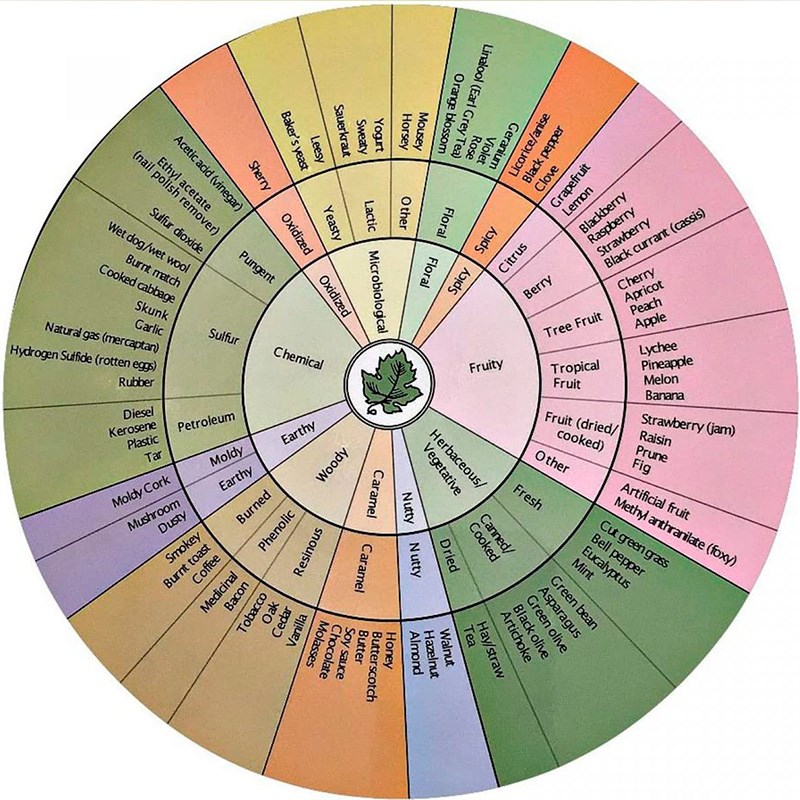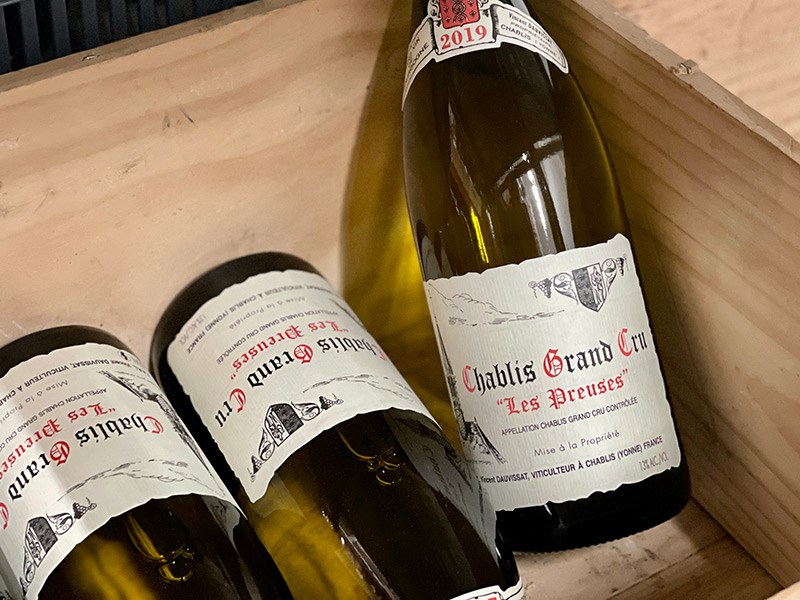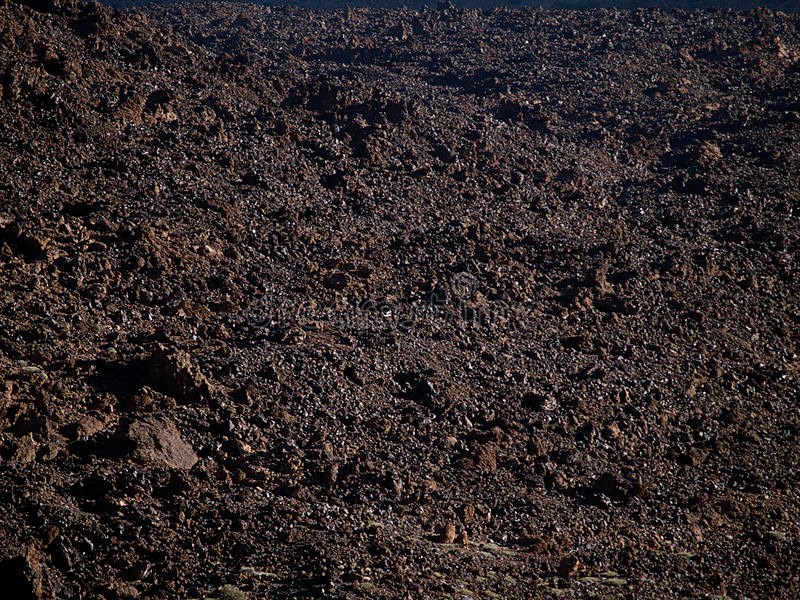Article - RareWine Academy
Minerality In Wine - What Does That Actually Mean?
Minerality is a buzzword in the world of wine. Used by many, rejected by others. The word has a frame of reference but lacks a definition. Learn more about the 'minerality'
It is a surprising fact that the word 'minerality' did not have a place on earth until the late 1980s. You did not find it on Dr. Ann Noble's 1984 Aroma Wheel, and you did not find it in the 1983 book 'The Taste of Wine' by the great father of modern oenology, Émile Peynaud.
Minerality is in fact a neologism that suddenly found its way into the wine vocabulary and settled with deep roots. The challenge lies in the fact that the word cannot be fully defined, and there is much disagreement as to whether it even belongs on the wine tasting palette.
When 'minerality' is used to describe a wine, it often refers to a flavor profile or mouthfeel. And in fact, it is used, although Microsoft Word rejects the word marked with the characteristic wavy red line. This article does not give you the answer to what minerality definitively means - but you will be presented with different interpretations. Because the term is used widely in the world of wine - defined or not.

Noun: Mineral
The noun 'mineral' has both a geological and a biological definition. In the geological sense, 'mineral' refers to a solid, usually crystalline substance of uniform chemical composition that occurs as a characteristic constituent of the earth's crust. In the biological sense, 'mineral' is an element (other than carbon, hydrogen, oxygen, and nitrogen) that is present in living organisms and has a biological function.
And even from the above definitions of mineral, it is difficult to clarify the origin of the concept of minerality. Geological minerals and rocks are not soluble and therefore cannot be absorbed by the vine plants. Biological minerals are present in soil and water and a minimal presence in wine is therefore plausible. The challenge is that biological minerals have no smell or taste.
And minerality is used precisely to describe the different aspects of the taste experience.
The Tidy Taste Of Rain-Soaked Asphalt
Minerality is a mouthfeel, and the most commonly described nuances of taste refer to types of rocks or fossils, such as stone, gravel, shale, slate, asphalt, flint, and oyster shells. But what is the taste of gravel?
It is argued here that you may recognize the taste of pencil tip from your childhood, the taste of gunpowder dust from the fireworks on New Year’s Eve, or the feel in the air when the road has received a heavy amount of rain. It could be the taste of the salty sea, the smell of chalkboard chalk or the feel of crushed gravel. These flavors are recurring themes among promoters of minerality - but how does minerality arise in wine, if at all?
Minerality: A Form Of Consensus
While there is no absolute definition of the term, there are some things that are somewhat agreed upon when it comes to minerality. Those who believe minerality exists agree that it is present in both red and white wines, but with much more frequent occurrence in white wines. There is also agreement that minerality and acidity are not the same, although minerality is only found in wines with high acidity levels.
Minerality is often attributed to wines such as Riesling, Assyrtiko, Sauvignon Blanc or Chardonnay. One of the reasons why minerality is more often found in white wines than red wines may be related to the use of oak wood in the maturation of red wines ¬- it is believed that the wood can conceal the minerality. However, many believe that red wines from Sicily, grown in volcanic soil from Mount Etna, also have minerality characteristics.
Chablis Is A Stronghold Of Minerality
Chablis and minerality go hand in hand. The vineyards of Chablis are full of fossilized oyster shells and calcified ammonites, a relic of the Jurassic period when the area was covered by water. And based on these mouth feelings, fossils and oyster shells are crucial in determining the minerality of Chablis wines. However, it is also said that the nutrient minerals the vines get from the fossils are indistinguishable from those they get from fertilizers or from the soil itself.
Moreover, it is not at all uncommon for the wines of Chablis to be associated with 'flint' and 'sulphur', and indeed this description has been used for the wines since the 18th century. Today, the concept of minerality dominates when describing Chablis wines, but the ancestor is certainly also flint and sulphur.
There is some evidence to suggest that the famous flinty smell of Chablis comes from sulphur compounds - either because the wines are cold in the fermentation process, or because the fermentation process itself is low in oxygen and nitrogen. Furthermore, clay and limestone are a common substrate in Chablis, and limestone soils are often less fertile, resulting in low nitrogen content in the juice. Ultimately, this gives a reductive and more flinty character that is associated with the mineral wines. In fact, Mosel Valley Riesling is also described as having a flinty character similar to Chablis, and it is believed to be attributed to the red and blue limestone on which the wine is grown.

Volcanic Trinity: Santorini, Soave, And Sicily
Although a very large proportion of wines originating in Chablis often have a mineral stamp attached to them, there are other wine regions where the term appears frequently. The Assyrtiko grape from Santorini is almost always described as mineral with hints of salt. The soil is volcanic, and the Mediterranean Sea probably adds to the saltiness.
The link with minerality and volcanic substrate is also present in the Italian region of Soave, where the soil consists precisely of basaltic rocks, tuff, and ash. Supporters of the concept of minerality would argue in this case that because the soil here is rich in minerals deposited in the earth for more than 30 million years, it will undeniably contribute to the sense of minerality in the wine.
Similarly, as mentioned above, it is certainly the volcanic soil of Etna, consisting of basalt, black ash, and pumice stones, that gives the Sicilian red wines made from Nerello Mascalese grapes a sense of minerality. This suggests that volcanic soils can be equated with the sensation of minerality. But...

Roots Drink Water
...Vine roots only drink water. So, for the vine to be able to take up any substance from, for example, volcanic soil, it must be dissolved in water. In order for stones, rocks, or fossils to be absorbed by the vine, they must first be reduced to elemental ions such as potassium or calcium - the plants use these for nutrition, but experts believe that the concentration will be so small that it will be almost undetectable in the finished wine.
However, many people point out that water from different sources tastes different. The origin of water is also of great importance in beer brewing, for example, where "hard" water is more suitable for porter and stout, and soft water is more suitable for the production of lager. The chemical composition of water and the pH value have a major impact on how much proteins, sugars and flavorings are extracted from the malt. And thus, the water is of great importance for both mouthfeel and flavor in the final product.
But even here there is a catch. Lager is the style of beer where minerality is highlighted at tasting. But a lager is usually remarkably low in minerals. The confusion is intact.
The above cannot, of course, be directly transferred to wine, but the fact that water can be experienced differently depending on its origin can be an interesting perspective to include in discussions of minerality in wine. Also, the perception of mineral-rich beers, whose content is poor in minerals. Grapes contain a lot of water, and even though minerals do not taste of anything, it may have an indirect influence on the perception of minerality - on the mouthfeel? Just as it is the case with beer.
But Is Minerality Not Really Just Terroir?
In the world of wine, the concept of terroir is more widely recognized and used than minerality. But terroir is actually also a relatively undefined concept, although there is agreement on a number of components. Terroir means: "a sense of place". Here 'place' refers to temperature, climate (rain, humidity, sun, frost, etc.), topography (slope and altitude of the land) and soil composition (sand, clay, pebbles, rock, etc.).
Minerality is therefore not 'just' terrior, but they both have in common that they are in a field of sensibility. A sense of taste and a sense of place. The concept of minerality is often placed under the terrior concept, and many would probably include it in the 'composition of the soil'.
However, minerality is not terroir, although both are used in the ever-growing global wine vocabulary.

No Definition At All - Is Minerality An Association?
Scientists search and search, but it remains unclear why some wines are defined by the concept of minerality while others are not. Jamie Goode, a plant biologist, and wine geek is the author of 'The Science of Wine: From Vine to Glass'. In his book, he writes that minerality can be described figuratively, just as a wine can contain notes of cherries or buttered toast. He also points out that language is the tool with which we can describe and examine wines. Goode says that the journey from perception to word is difficult, but that he likes the word 'minerality' because he knows what it is when he tastes it.
In the past, language was a lot more limited than it is now. And as language has become more enriched, language users have also had to be more nuanced in their descriptions and perceptions - of wine, for example. This means that the perception of minerality may well have existed before the term was used and became widespread and popular. Minerality may well be the association with fossils, rocks, gravel, slate, asphalt, or flint - minerality may well be the umami - the fifth element - of wine, although researchers do not yet have an explanation as to why this is actually the case.
Many people know what minerality is when they taste it.
The Metaphorical Language Of Wine
Our language is constantly changing. And how an individual perceives a wine is, of course, subjective. It is only when the individual has to describe their subjective experience of the wine that language often fails. And this is perhaps why minerality has become as popular as it is.
Minerality is a quality predicate that describes geological connotations. In wine, it has long been common to use descriptors such as kerosene, leather, rubber and even cow dung to describe the flavors in a wine. Metaphors are queuing up to describe texture and flavor, and metaphors die and lose their expressive power. Minerality has become a buzzword - a language adjunct to the description of the stony aromas. And language is apparently not satisfied with words like rock, gravel, fossils, and shale.
Minerality: Impossible To Define
When 'minerality' first appeared in the wine world's widely accepted wine encyclopedia 'The Oxford Companion to Wine', editor Jancis Robinson wrote that the word was too widespread to be ignored, even if it was impossible to define.
The above assumptions support that statement. So, although minerality is represented widely in normal wine vocabulary, it is still not defined. It is mental associations, and it is ambiguous.
The experts believe it is very unlikely that the mineral sense comes from minerals in the soil. It is more likely to be the absence of other elements. A particular grape variety, grown in particular areas. The absence of the use of oak in maturation. Or cold fermentation processes. Minerality is of course a mental construction, and many would categorize it as good marketing. Just know that when someone describes a wine with minerality characteristics, it often refers to an association with rocks and fossil flavors and mouthfeel.
Perhaps the future will tell us more about what minerality really is. But for now, it is not defined, but widespread.
